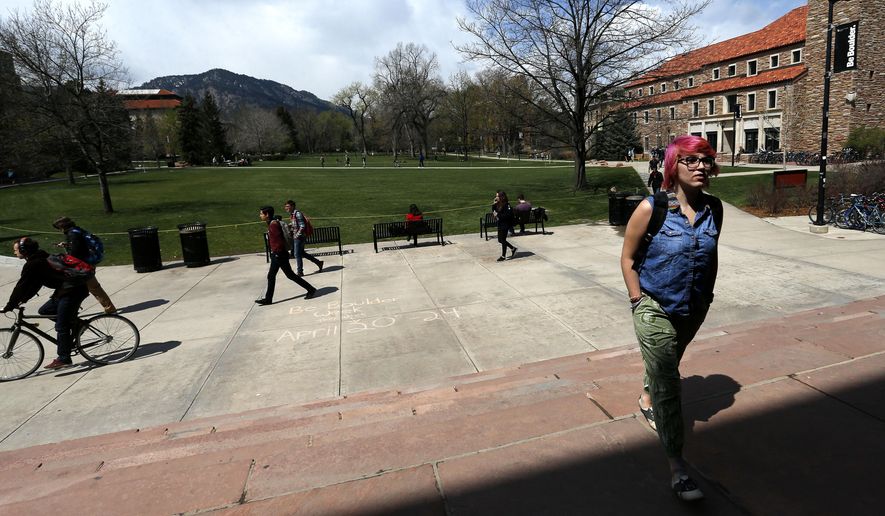ANALYSIS/OPINION:
In a first-of-its-kind effort, the nation’s Career Education Colleges and Universities (CECU) recently unveiled a set of landmark proposals to modernize and directly connect the Higher Education Act to jobs. We are at a pivotal time as the Higher Education Act is positioned as the nation’s workforce investment program, and it is imperative that our policies are best prepared to meet the challenges of tomorrow.
The stakes are high as the Bureau of Labor Statistics forecasts that by 2024, America will need 46.5 million new workers to fill new jobs and replace retiring baby boomers. And 65 percent of all replacement jobs and 85 percent of all new jobs will require some level of postsecondary education. Job training leads to job growth, and training and career education is not only critical to fulfilling the nation’s workforce needs, it is key to fueling economic growth.
As we begin to seek common ground with the Congress and the administration on the new budget and reauthorization of the Higher Education Act, we believe the modernization of Pell Grants might be a good place to start. The president has proposed year-round Pell. The Congress protected Pell in the recent funding deal. The next step is to make sure Pell is recognized as a critical tool in supporting millions of students into good jobs.
We must better position our higher education laws by pursuing advanced policies, like a new Workforce Pell Grant featured below, to help students learn the skills and training they need. Our schools believe we should build upon the commitment to modernize Pell as a launch point in our work to directly connect the Higher Education Act to jobs.
As part of this important effort, highlighted below are 10 innovative solutions we have offered and are currently converting into a bipartisan higher education jobs bill to help students of all backgrounds and in every community succeed.
1. A new Workforce Pell Grant: The new proposal to help adults in the workforce includes three elements:
• Expanding eligibility for Pell for those adults seeking to obtain career skills who have previously exhausted their Pell eligibility 10 years ago.
2. A common set of outcome metrics for all schools’ career programs: Transparency is critical to enabling students to make the right choices. We recommend that all career programs at all schools provide students with the following common metrics:
• Graduation rates.
• Total cost per graduate.
• The average occupational salary in one’s labor-market region.
• The most recent average debt of students completing the program at that school.
3. Converting aspects of the Gainful Employment (GE) rule into an informational metric for all career programs at all schools: The GE regulation transitions to information data by all schools with career programs (broadly defined) to include:
• The BLS average wage (by region) for each occupation.
• The average student debt of the most recent graduation class in this field of study.
• Requiring such information to be posted on school website and provided to every current and prospective student in that field of study.
4. A revised Ability-to-Benefit measure for those students completing six credits and participating in a school’s Career Pathway Program.
5. Connecting apprenticeship to academic degrees by providing credit toward degrees.
6. Enhancing transfer of credit among schools: Requiring all schools accredited by the same accreditor to provide credit transfer for same-level courses will significantly help students keep costs down by not having to repeat courses and avoid delays in academic progress.
7. Connecting work study to a student’s career studies: Work study should be targeted to employment opportunities that provide students with experience in the careers they are studying.
8. Universal income-based repayment: Automatically enrolling students in income-based repayment and deducting student loan payment through payroll deductions, thereby simplifying the entire repayment process.
9. Recognition of and access to credentials: Changes are needed to the statutes governing federal student aid to promote the use and recognition of credentials. CECU recommends tying the disbursement of aid for credentials to the actual competencies completed, rather than attempted, and requiring that programs offering competency-based education are accredited, that the school is in good standing for federal Title IV funds, and that program completion is equivalent to the skills and knowledge achieved in traditional academic programs for the same learning.
10. Supporting students attending at-risk institutions: In the recent past, the Department of Education was good at closing schools and leaving students on the streets. This proposal, funded by postsecondary career schools, would prioritize the department’s work to keep students in school, and on their way to degrees and jobs.
If our nation seeks good-paying jobs for all Americans, we need to begin by making sure higher education connects to jobs. Today, the Higher Education Act is America’s workforce investment strategy. Let’s recognize reality — and then get it right.
• Steve Gunderson is a former Republican member of the U.S. House of Representatives from Wisconsin and currently serves as president and CEO of the Career Education Colleges and Universities.


